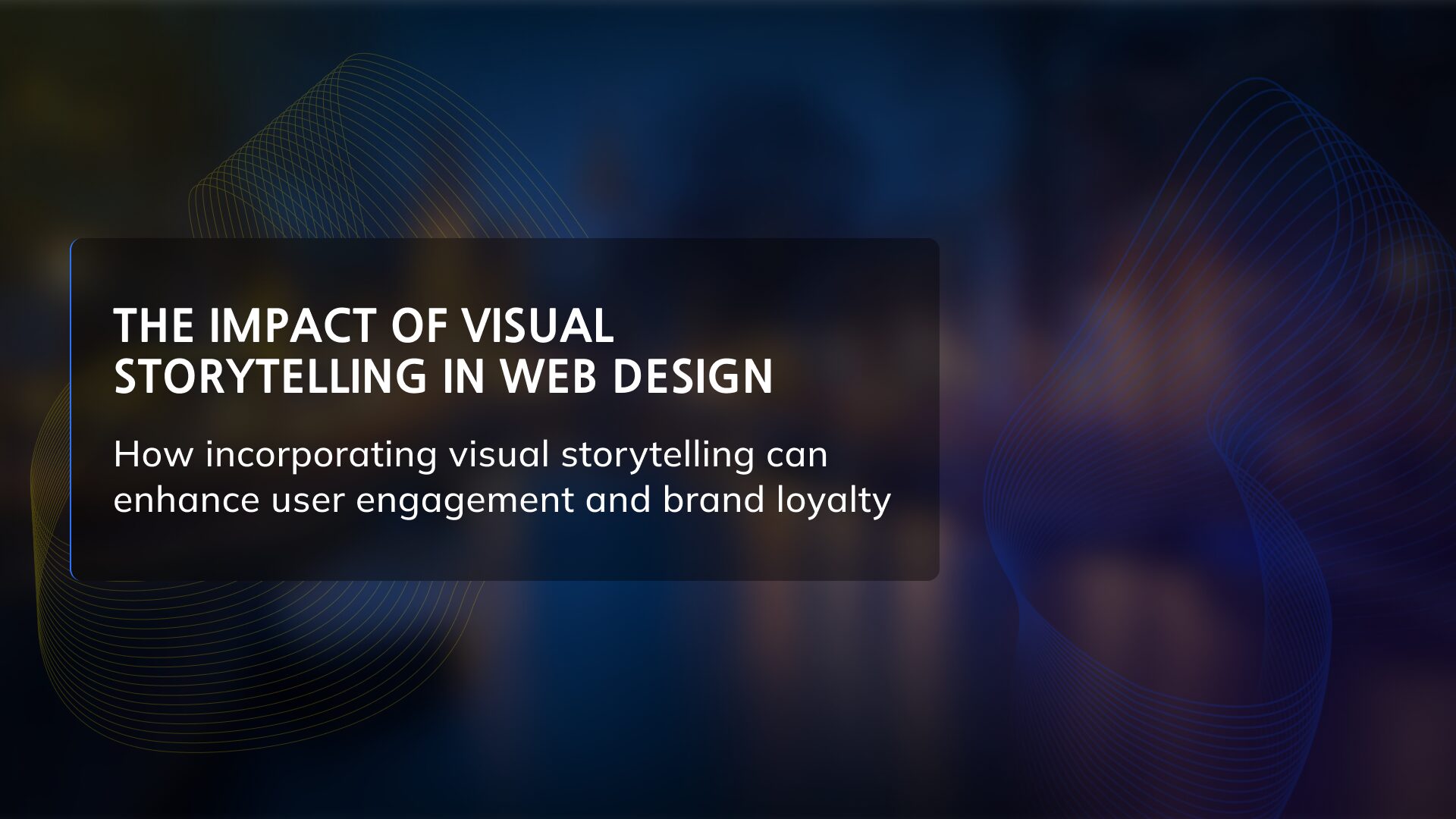How incorporating visual storytelling can enhance user engagement and brand loyalty
In an era where digital presence is crucial, the design of a website plays a significant role in capturing and retaining the attention of users. One of the most effective ways to engage visitors and foster brand loyalty is through visual storytelling. By weaving narratives into the visual elements of web design, businesses can create a more compelling and immersive user experience. This article explores how incorporating visual storytelling in web design can enhance user engagement and strengthen brand loyalty.
What is Visual Storytelling?
Visual storytelling is the use of images, videos, graphics, and other visual elements to convey a narrative. It leverages the human brain’s natural inclination towards visual information to make complex concepts easier to understand and more memorable. In web design, visual storytelling involves crafting a cohesive narrative that guides users through a website in an engaging and meaningful way.
Enhancing User Engagement

1. Captivating First Impressions First impressions are crucial in web design. A visually appealing homepage with a strong narrative can captivate visitors and encourage them to explore further. High-quality images, engaging videos, and dynamic graphics can create an immediate connection with users, making them more likely to stay on the site.
2. Simplifying Complex Information Visual storytelling can simplify complex information, making it more accessible and understandable for users. Infographics, charts, and diagrams can break down intricate data into easily digestible visual formats, enhancing user comprehension and retention.
3. Emotional Connection Visual elements have the power to evoke emotions, which can significantly impact user engagement. By incorporating storytelling elements that resonate emotionally with the audience, businesses can create a deeper connection with their users. This emotional bond can lead to increased time spent on the site and a greater likelihood of return visits.
4. Interactive Experiences Interactive elements such as sliders, animations, and clickable infographics can make the user experience more engaging. These features encourage users to interact with the content, leading to higher engagement rates. Interactive storytelling also allows users to explore the narrative at their own pace, creating a more personalized experience.
Strengthening Brand Loyalty
1. Consistent Brand Messaging Visual storytelling helps in maintaining consistent brand messaging across the website. By aligning visual elements with the brand’s voice, values, and mission, businesses can create a cohesive and memorable brand identity. Consistency in storytelling fosters trust and loyalty among users.
2. Building Trust and Credibility A well-crafted visual narrative can convey professionalism and attention to detail, enhancing the credibility of a brand. Authentic and relatable stories can humanize the brand, making it more trustworthy in the eyes of consumers.
3. Highlighting Brand Values Visual storytelling provides an opportunity to showcase a brand’s values and mission in a compelling way. By highlighting stories that reflect the brand’s commitment to quality, sustainability, or community involvement, businesses can attract like-minded customers who are more likely to remain loyal.
4. Encouraging Social Sharing Engaging visual content is more likely to be shared on social media platforms. When users share visually appealing and emotionally resonant content, it increases the brand’s visibility and reach. This organic sharing can lead to a stronger community of loyal followers.
Implementing Visual Storytelling in Web Design

1. Use High-Quality Visuals Invest in high-quality images, videos, and graphics that align with your brand’s narrative. Professional visuals can significantly enhance the storytelling experience and make a lasting impression on users.
2. Create a Narrative Structure Develop a clear narrative structure that guides users through the website. Use visual elements to tell a cohesive story that unfolds as users navigate through different sections of the site.
3. Leverage User-Generated Content Incorporate user-generated content such as customer testimonials, reviews, and social media posts into your visual storytelling. This not only adds authenticity to your narrative but also engages users by making them feel part of the brand’s story.
4. Optimize for All Devices Ensure that your visual storytelling is optimized for all devices, including desktops, tablets, and smartphones. A responsive design ensures that users have a consistent and engaging experience regardless of the device they are using.
Conclusion
Incorporating visual storytelling in web design is a powerful strategy to enhance user engagement and build brand loyalty. By creating captivating visual narratives, businesses can make a lasting impression on their audience, simplify complex information, and foster emotional connections. Consistent and compelling storytelling not only attracts and retains users but also strengthens their loyalty to the brand. As the digital landscape continues to evolve, leveraging the power of visual storytelling will be essential for businesses aiming to stand out and succeed online.




